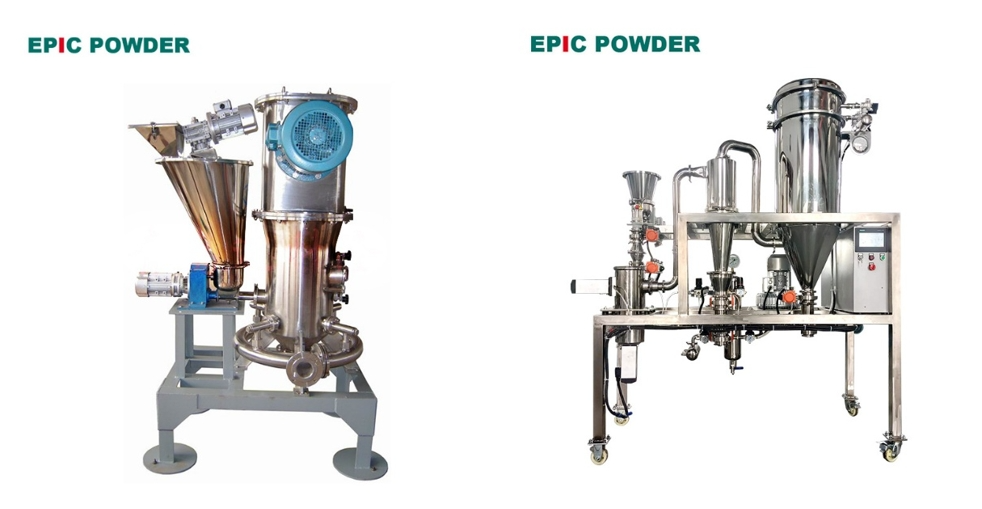Pigments play a crucial role in lots of products, from paints and coatings to plastics, inks, and cosmetics. Achieving precise, consistent pigment particle size is vital to product quality, affecting attributes such as color strength, opacity, gloss, and stability. Jet milling technology has emerged as a leading method for ultra-fine pigment grinding, meeting growing industry demands for finer powders with narrow particle size distributions. It uses high-speed compressed air or gas jets to accelerate particles, causing high-velocity collisions that reduce particle size. Jet mills operate without internal moving parts, ensuring contamination-free grinding at low temperatures—critical for thermally sensitive pigments.

Why Jet Milling is Preferred for Pigment Processing
Jet milling offers several distinct advantages specific to pigments:
Low Temperature Grinding: The adiabatic expansion of gases cools the mill, protecting heat-sensitive pigments from degradation.
Fine Particle Size: Typical particle size ranges between 1 to 10 microns, with some pigments ground down to submicron and nanoscale levels (e.g., as fine as 0.1 micron). This increased surface area improves color intensity and uniformity.
Narrow Particle Size Distribution: Integrated classifiers enable precise control of particle size, avoiding both over- and under-sized particles that reduce product performance.
Purity and Contamination Prevention: With no grinding media, jet mills minimize contamination risks, crucial for high-purity pigment applications.
Versatility: Able to handle hard, brittle, or friable pigments including titanium dioxide, iron oxide, carbon black, and zinc oxide efficiently.
Data-Backed Performance Insights
Based on industry performance data from advanced jet milling systems:
| Pigment Type | Median Particle Size (D50, μm) | Surface Area (m²/g) | Typical Application |
| Titanium Dioxide | 0.13 | ~50-70 | High-opacity white paints and coatings |
| Carbon Black | 0.6 – 1.0 | 25-40 | Printing inks, rubber reinforcement |
| Zinc Oxide | 0.13 – 0.87 | 15-40 | UV protection in cosmetics, coatings |
| Synthetic Iron Oxide | 0.07 | 40-60 | Colorants in plastics and coatings |
Studies show that pigments ground to smaller and more uniform particle sizes exhibit stronger tinting strength and improved hiding power, leading to better color saturation and coverage. For example, titanium dioxide particles below 0.5 microns maximize opacity, while finer carbon blacks improve gloss and jetness in inks.

Industry Trends Influencing Jet Mill Adoption for Pigments
The global jet mill market was valued at approximately USD 158 million in 2024 and is forecast to grow steadily at a CAGR of around 3.4-5%, reaching over USD 214 million by 2030. This growth is driven by:
Rising Demand for High-Quality Pigment Powders: Especially in coatings for automotive, architectural, and industrial applications seeking better durability, gloss, and color consistency.
Expansion of Specialty Pigments and Nanopigments: Industries such as electronics, cosmetics, and pharmaceuticals increasingly require ultra-fine and precisely graded pigments to meet functional demands.
Stringent Quality and Environmental Regulations: Manufacturers require contamination-free, reproducible processes that jet milling supports by minimizing dust emissions and eliminating grinding media.
Technological Enhancements: Innovations such as fluidized bed opposed jet mills and integration with superheated steam improve grinding efficiency, particle size control, and moisture removal during milling.
Regionally, Asia-Pacific leads market growth due to rapid industrialization, increasing pigment production capacities, and strong demand across sectors including automotive coatings, plastics, and consumer goods.

EPIC Powder Machinery’s Solutions for Pigment Grinding
At EPIC Powder Machinery, our jet milling systems are engineered to meet the exacting requirements of pigment grinding. The MQW series fluidized bed opposed jet mills incorporate high-performance classifiers and durable wear-resistant materials to achieve powder fineness down to d97 = 1 micron, with steep particle size distributions tailored for diverse pigment types.
Our systems are designed to optimize: Energy efficiency and throughput while maintaining low temperature operation to protect pigment integrity. Precision classification to ensure uniform particle size distribution and high batch-to-batch consistency. Clean operation and minimal downtime with easy-to-maintain modular components.
Conclusion
Jet milling continues to be the gold standard in pigment grinding, enabling manufacturers to meet increasingly stringent performance specifications. The ability to produce ultra-fine, uniformly sized, and contaminant-free pigment powders without thermal degradation is critical for delivering superior color, opacity, and durability in final products. With robust market growth projected and ongoing technological advances, investments in advanced jet milling equipment from trusted suppliers like EPIC Powder Machinery provide a competitive edge, enabling industries to tap into new applications and improve manufacturing efficiency.